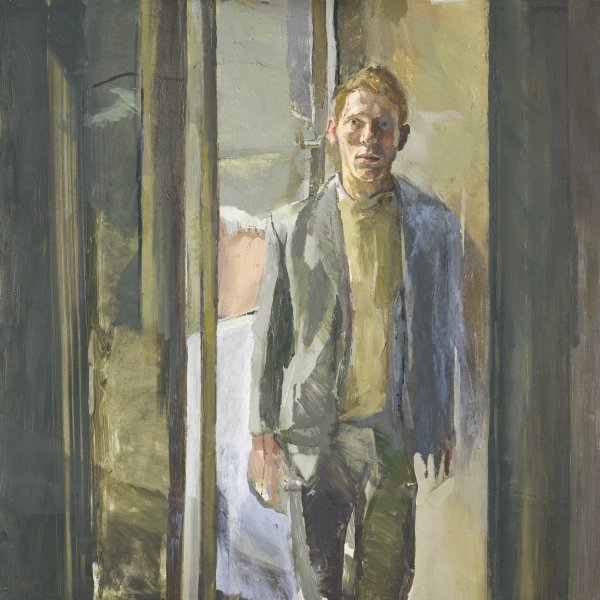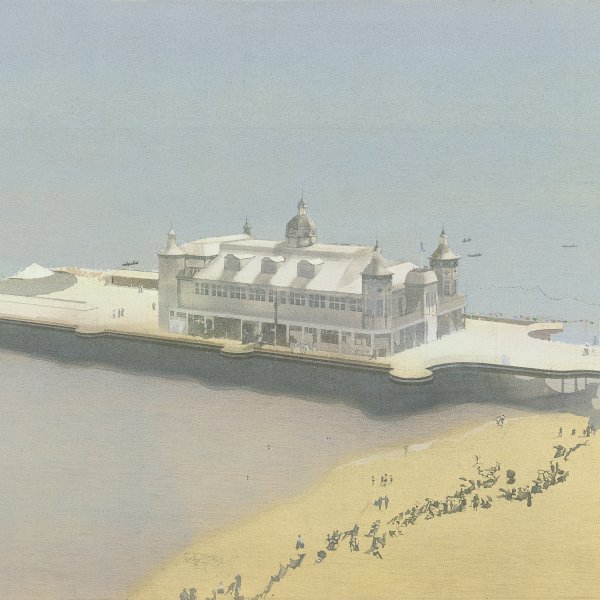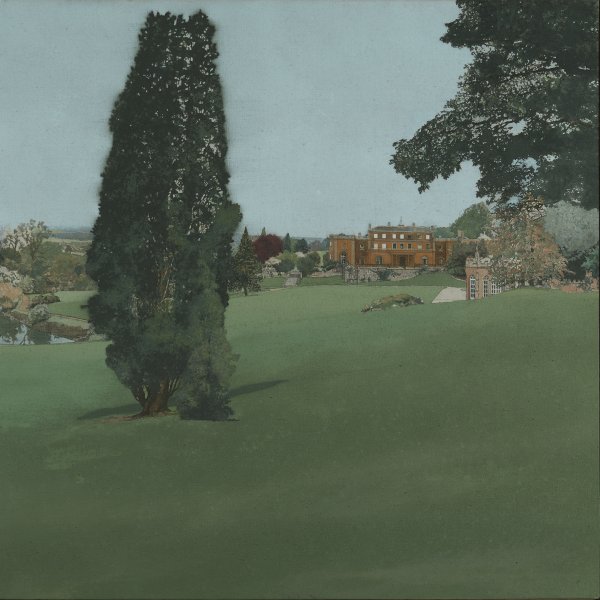Michael Andrews
Norwich, 1928-London, 1995
Michael Andrews occupies an important place among the British artists of the post-Second World War period. His work, executed slowly with great attention to detail, has been associated with the School of London, a heterogeneous group of artists with a shared interest in representing the human figure and an outright rejection of the academic naturalist tradition.
Raised in a strict Methodist environment, Andrews studied at the Slade School of Art in London in 1947 and again from 1949 to 1953, after performing military service. There he was a student of William Coldstream, a realist artist linked to the Euston Road School, who taught him the importance of copying from life, and received classes from Lucian Freud. From his early days as a painter his works were characterised by a concern with achieving technical virtuosity and representing states of mind and different types of behaviour.
Andrews’ paintings of family scenes of the 1950s were followed in the 1960s by party pictures, into which he incorporated images from the media, fashion, the film world and pop music, together with depictions of his friends. In 1959 he began teaching at the Norwich School of Art, and later held posts at the Chelsea School of Art and Slade School of Art.
Like Francis Bacon and Lucian Freud before him, in 1966 Andrews signed a contract with the Marlborough Gallery, which enabled him to devote himself solely to painting and start work on studies for his Lights series. In this series he experimented with acrylic paint and spray guns, which allowed him to achieve surfaces from which the artist’s hand was absent and in which light acquired a far-reaching significance. His exploration of nature as a liberating experience increased in the paintings and watercolours made during his trip to Australia and numerous visits to Scotland, and continued to be a constant feature until the end of his days.
Raised in a strict Methodist environment, Andrews studied at the Slade School of Art in London in 1947 and again from 1949 to 1953, after performing military service. There he was a student of William Coldstream, a realist artist linked to the Euston Road School, who taught him the importance of copying from life, and received classes from Lucian Freud. From his early days as a painter his works were characterised by a concern with achieving technical virtuosity and representing states of mind and different types of behaviour.
Andrews’ paintings of family scenes of the 1950s were followed in the 1960s by party pictures, into which he incorporated images from the media, fashion, the film world and pop music, together with depictions of his friends. In 1959 he began teaching at the Norwich School of Art, and later held posts at the Chelsea School of Art and Slade School of Art.
Like Francis Bacon and Lucian Freud before him, in 1966 Andrews signed a contract with the Marlborough Gallery, which enabled him to devote himself solely to painting and start work on studies for his Lights series. In this series he experimented with acrylic paint and spray guns, which allowed him to achieve surfaces from which the artist’s hand was absent and in which light acquired a far-reaching significance. His exploration of nature as a liberating experience increased in the paintings and watercolours made during his trip to Australia and numerous visits to Scotland, and continued to be a constant feature until the end of his days.







